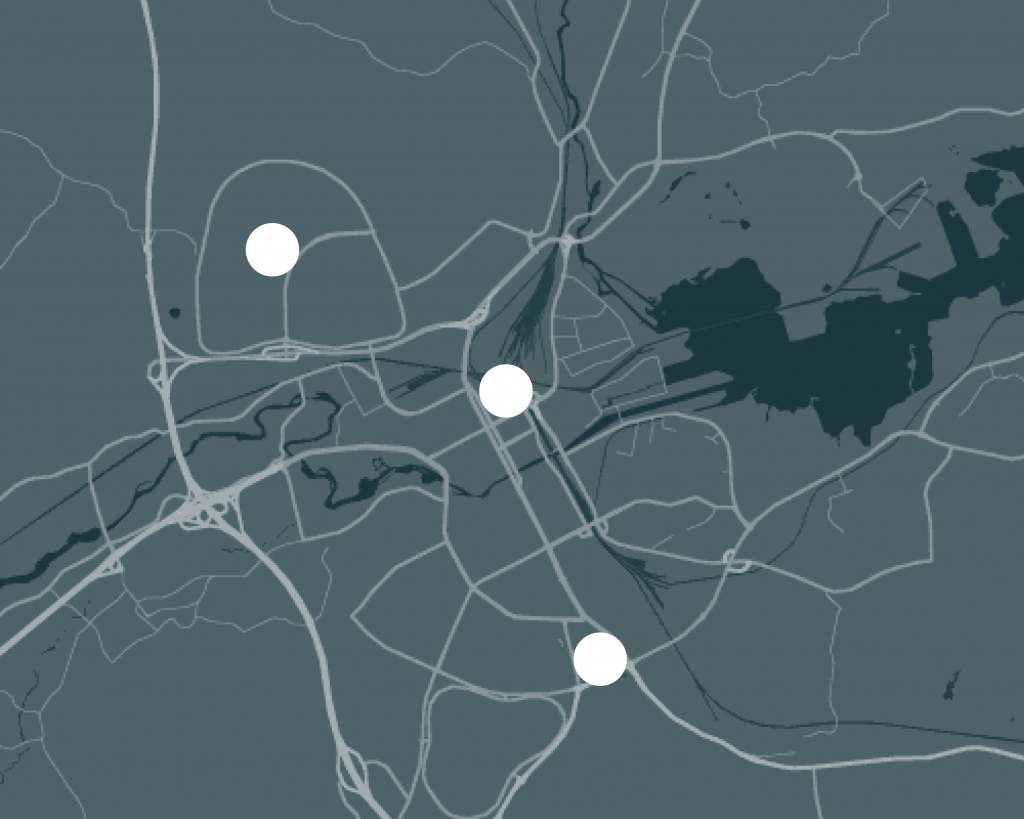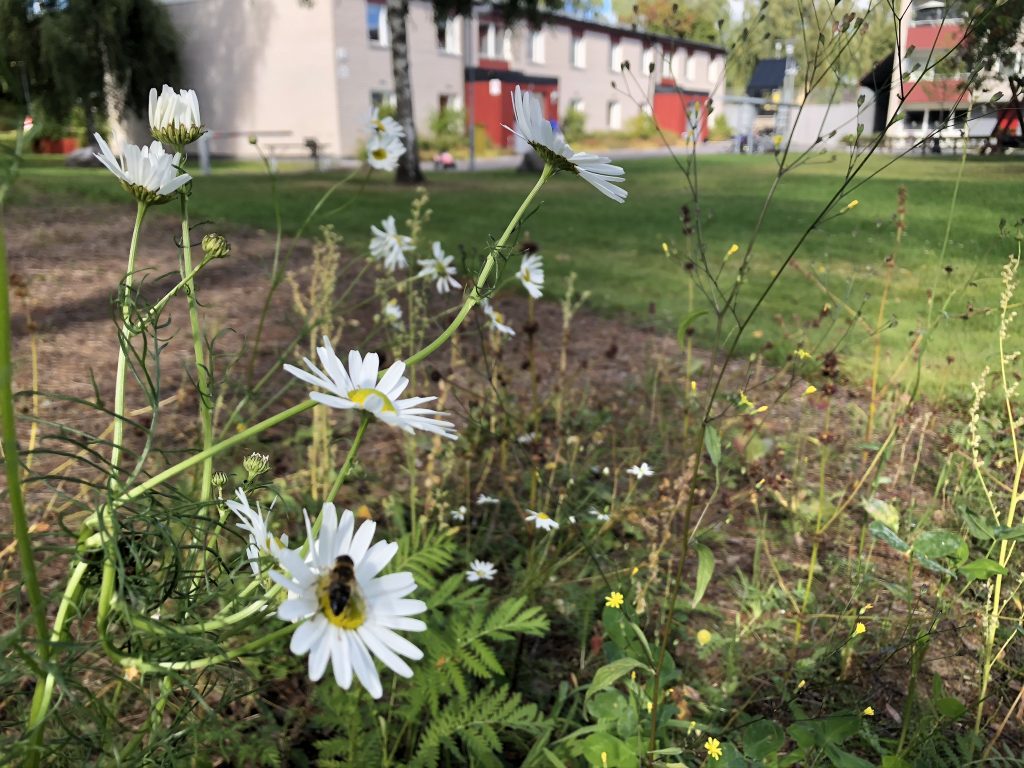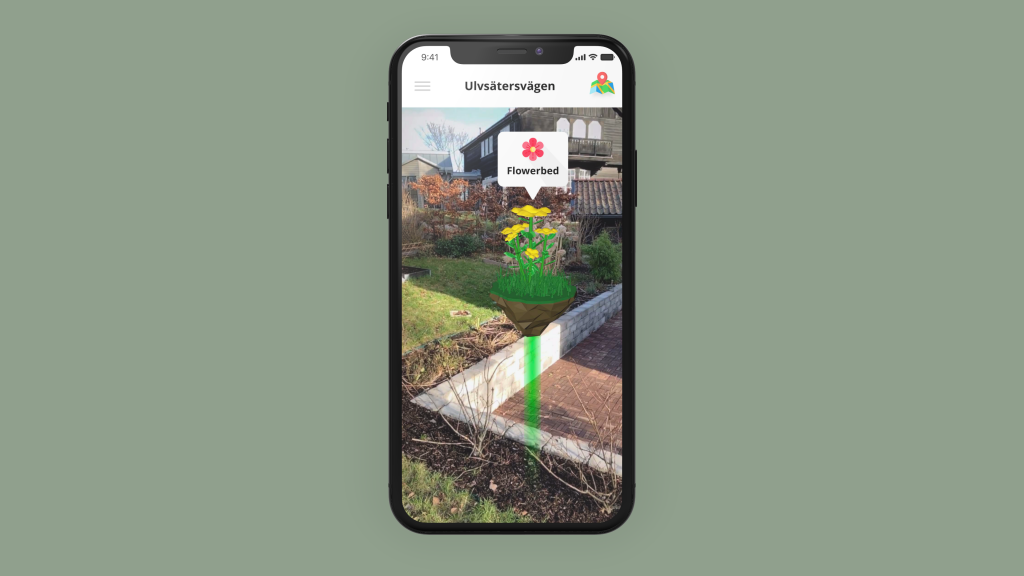Gävle is a city in Sweden, roughly 170 km North from Stockholm. Gävle has been a harbour city for centuries, and it is still one of the largest marine transport hubs in Sweden. With the combination of a large industrial sector, an increase of population, and rising environmental awareness in Sweden, there is a need for a shift towards sustainable environments both in the new and existing building stock. In the overall move from industry-heavy urban planning to a more diverse and innovation-driven urban planning, a key role is in collaboration with various stakeholders who used to operate in isolation.

Unlike in other Local Action cases, Gävle was a collaboration between the University of Gävle and the Gavlegårdarna public housing management company. The aim was to make an already existing housing area more resilient, by engaging people in creating more biodiversity. The Local Action implemented a series of interventions at two housing areas that have similar outdoor areas, typical of developments in the second half of the 20th century. The areas have segregated traffic, large lawns, and some playgrounds. Surveys of the people living in the area show that while the tenants are happy with the indoor environment of the public housing complex, they are less satisfied with the outdoor areas.
Gavlegårdarna, the housing company, was eager to try something new, including developing an augmented reality (AR) application for managing their outdoor areas and creating more participation opportunities for the residents. The aim of this was to create active and biodiverse outdoor areas for two existing public housing areas (Hemsta and Ulvsätersvägen). The sites are mainly houses, yards between the houses, streets and surrounding spaces. Surrounding areas are owned by the municipality, housing associations; there are also some allotments. Using the best available knowledge of sustainability and resilience, the end result of the project consisted of a series of physical outdoor improvements that increase the wellbeing of people and pollinators. These improvements included adding meadows, using different planting techniques, adding bee hotels, sand-beds for pollinators, planting apple trees, and providing residents with mini-gardens (in Hemsta) for their balconies.
During the project, three ways of creating biodiversity through a dry meadow – a type of meadow that is in decline in Sweden – were tested. The first method involved taking away the existing lawn, putting in new soil and sand and then planting seeds. The second method consisted of removing the lawn and replacing it with pregrown meadow plant carpets. In the third method, the lawn was removed and the area filled with soil and sand, but instead of using bought seeds, hay collected from a local meadow was spread on the site, allowing the seeds to plant themselves. The second method gave the fastest results, but is more expensive and needs preplanning. The third method is the most sustainable, but also more time consuming both in execution and in seeing the results.
The mini-gardens were a way to engage residents in creating pollinator-friendly environments and to give tenants a sense of stewardship. The mini-gardens consisted of a woven basket (50cm radius, 60 cm in heights) and pre-planted plants. The residents got the mini-gardens for free and they got to choose from three different types of plant assemblies. Each basket had five to six different plants of varying heights (15 to 100 cm), colours ranging from red and pink to white or blue and with blooming times extending from early June to November. The plants were chosen so that each basket would have diverse qualities, such as scents, nectar richness for pollinators and at least half of them were edible. For example, one of the baskets had bronze fennel, heliotrope, yellow-leaved mint, dew sage and marigold. Each basket had an irrigation tank at the bottom, so after a few weeks, as the plants grew longer roots, they did not need watering multiple times per week.
These activities were carefully planned in collaboration with a biologist, zoologist, city architect, tenants, outdoor environment managers, tenants, local nature organisations, University of Gävle, and Gavlegårdarna. A more detailed insight of the plans of the areas and the resulting policy integration can be found in the Integrated Urban Plan section.
Extended reality (XR) solutions
The project has shown that XR technology can be used to facilitate participation and communication of ideas and knowledge.
The development of the AR app in this Local Action showcased one of many possibilities to use the technology to share information and knowledge in an easy way for both managers of outdoor environments and tenants. It is an example of how the value of the outdoor environment can be increased by adding information about the plants, flowers and pollinators, to an existing site.
During this project, an application was developed that allowed geographically present information about flower beds both for local tenants and for people managing the green areas. The tenants could walk on site, with the app open, point to a flower bed, and get information. This includes what type of a plant they are looking at, as well as the reason behind the planting of them at that specific site, their characteristics, when they flower, what benefits they give to a site or to ecosystems and what type of conditions the plants need. For site managers, the information would also include detailed information about how often and how these plants should be handled.
Key experience – multi-stakeholder creation of pollinator-friendly environments
The majority of flowering plants rely on pollinators to reproduce. Flowering plants, in turn, are the basis or an element in the food, beverage, medicine and clothing that people use daily. Pollinators are a key player in ecosystem services, but worldwide their number has been in decline due to the use of pesticides and decline in habitat. To counter this, both local physical and more widespread political interventions are needed to inform people about the problem and to re-create habitats for pollinators.
The key experience in Gävle was getting multiple stakeholders involved in investing and creating pollinator-friendly environments. This included:
- Saving spring-flowering trees, bushes and flowers.
- Creating bee hotels and sand-hotels (they matter and are important)
- Considering meadows as an alternative to lawns
- Increasing biodiversity by planting a variety of species, cut lawns less often and let wild nature stay as it is.
- If planting flowers, plant nectar- and pollen-rich flowers
- Transform parts of existing lawns to meadows
To implement these interventions, an important aspect was to tell everybody about the overall mission and goal with the project, about pollinating insects such as butterflies, bumblebees and bees, how they are responsible for important ecosystem services and explain why we need to combat the decline in pollinator numbers. In addition, it was essential to increase dialogue between different landowners and neighbours, so everyone was on the same page. To increase interest in locals, in this case, the housing company tenants, investment in tools and objects that people can use to increase the biodiversity in their vicinity has a large effect. It was also essential to reach out to green area managers, so they would know about biodiversity and ecosystems services.
Both grassroot and top-down approaches to biodiversity are vital. Ecosystem services and biodiversity should also be part of procurement processes and all levels of policy documents that influence the development and maintenance of public space.







